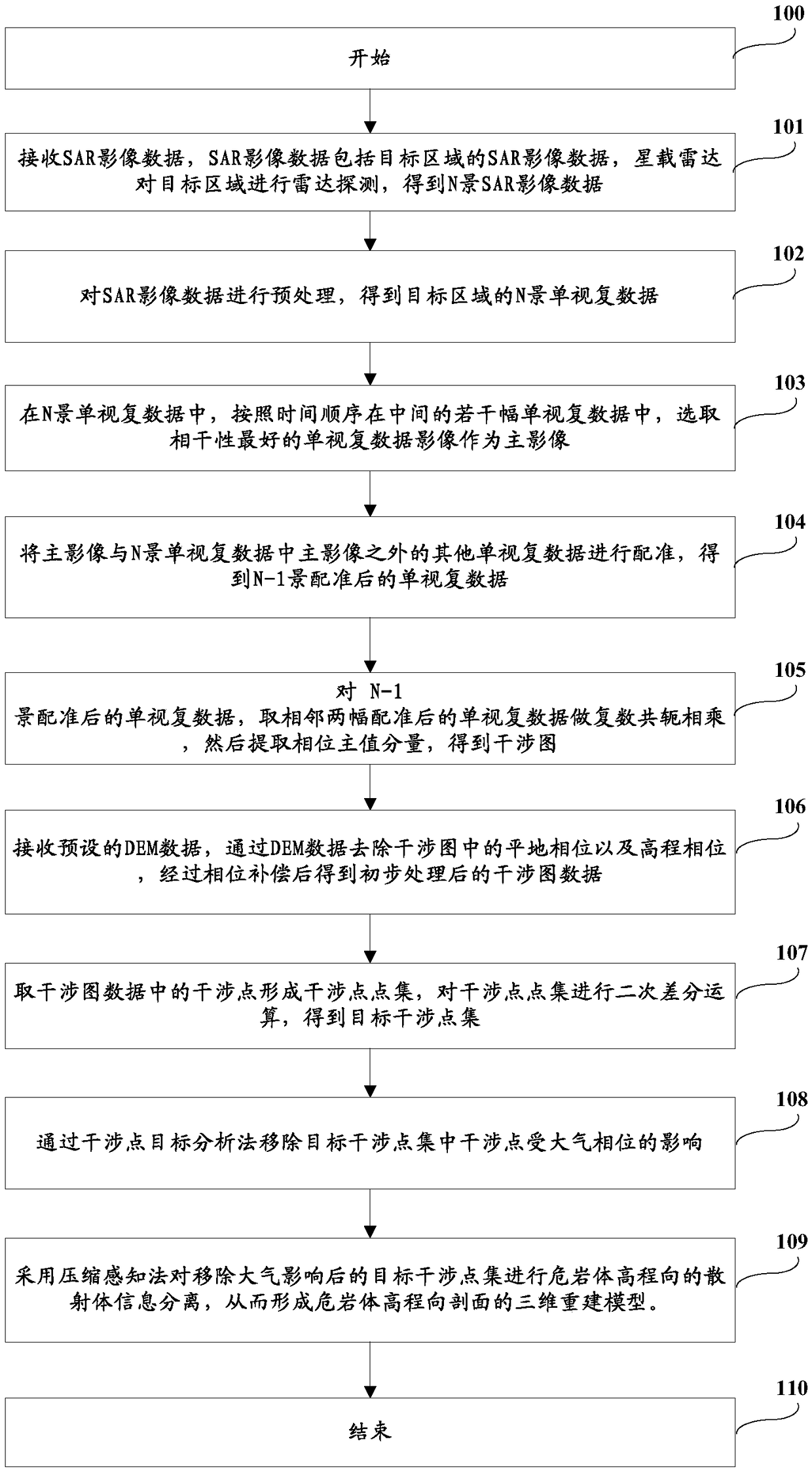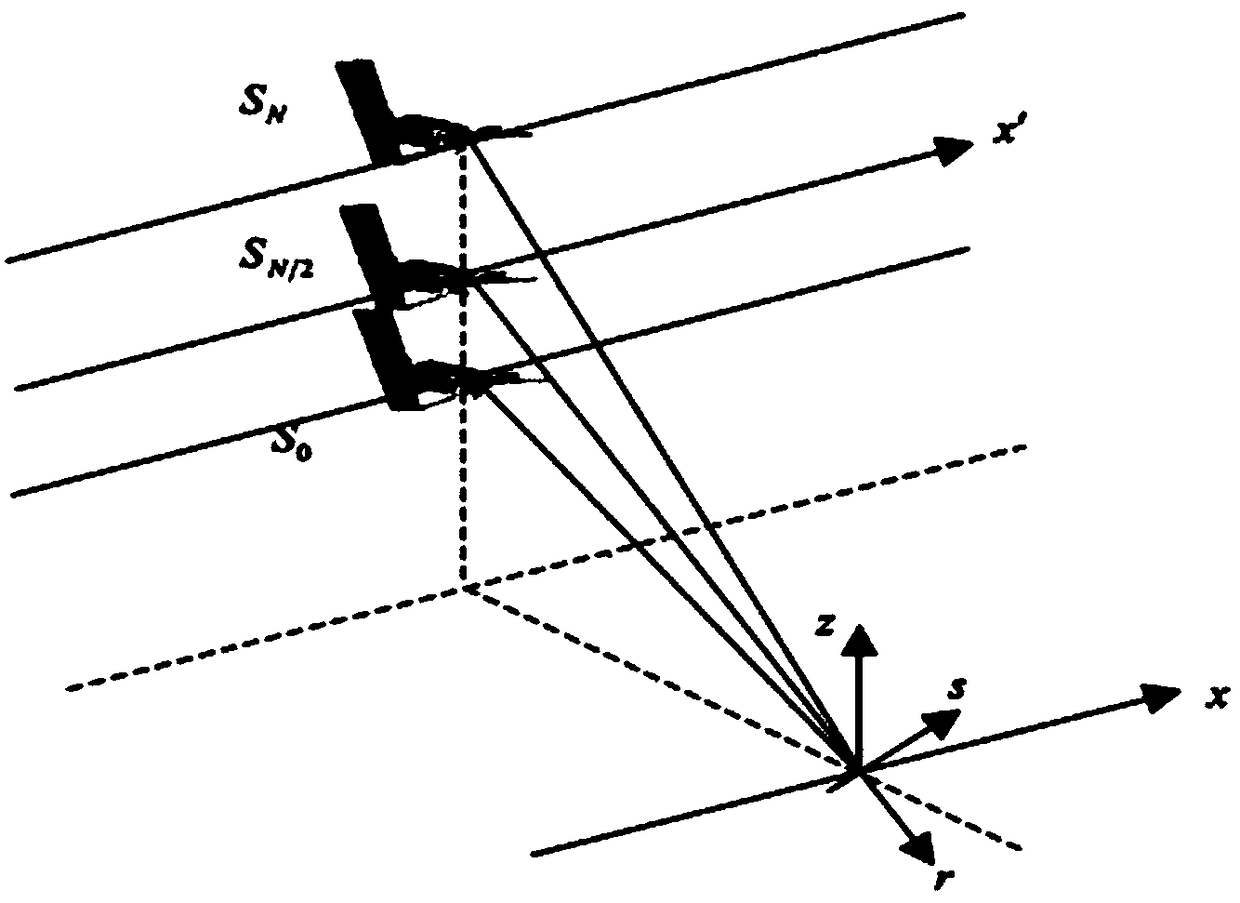Method and system for monitoring dangerous rock mass deformation by using synthetic aperture radar
A technology of synthetic aperture radar and dangerous rock mass, which is applied in radio wave measurement system, measurement device, radio wave reflection/re-radiation, etc. It can solve the problems of many noise points, more professional knowledge, and greater difficulty in technology promotion, etc. problems, to achieve the effect of ensuring reliability and high efficiency
- Summary
- Abstract
- Description
- Claims
- Application Information
AI Technical Summary
Problems solved by technology
Method used
Image
Examples
Embodiment 1
[0060] Such as figure 1 Shown is a flow chart of a method for monitoring dangerous rock mass deformation with synthetic aperture radar according to an embodiment of the present invention, including the following steps:
[0061] Step 100: start.
[0062] Step 101: Receive SAR image data, the SAR image data includes the SAR image data of the target area, and the spaceborne radar performs radar detection on the target area to obtain the SAR image data of N scenes.
[0063] It should be noted that a SAR (Synthetic Aperture Radar) image, or SLC, is an image composed of multiple pixels, and each pixel represents a ground resolution unit, including the phase and backscattering intensity information of the above-mentioned ground objects.
[0064] Step 102: Preprocessing the SAR image data to obtain N-scene single-view complex data of the target area.
[0065] Step 103: In the single-view complex data of the N scenes, select the single-view complex data image with the best coherence ...
Embodiment 2
[0117] Step 200: start.
[0118] Step 201: receiving SAR image data, the SAR image data includes the SAR image data of the target area, the spaceborne radar performs radar detection on the target area, and obtains the SAR image data of N scenes.
[0119] Step 202: Perform preprocessing on the SAR image data to obtain N-scene single-view complex data of the target area.
[0120] Step 203: In the single-view complex data of the N scenes, select the single-view complex data image with the best coherence among several pieces of the single-view complex data in chronological order as the main image.
[0121] Step 204: Register the main image with other single-vision complex data in the single-vision complex data of N scenes other than the main image, to obtain single-vision complex data after registration of N-1 scenes.
[0122] Step 205: For the registered single-view complex data of scene N-1, take two adjacent pieces of the registered single-view complex data and perform complex...
Embodiment 3
[0131] Step 300: start.
[0132] Step 301: receiving SAR image data, the SAR image data includes the SAR image data of the target area, the spaceborne radar performs radar detection on the target area, and obtains the SAR image data of N scenes.
[0133] Step 302: Perform preprocessing on the SAR image data to obtain N-scene single-view complex data of the target area.
[0134] Step 303: In the single-view complex data of the N scenes, select the single-view complex data image with the best coherence among several pieces of the single-view complex data in chronological order as the main image.
[0135] Step 304: Register the main image with other single-vision complex data in the single-vision complex data of N scenes other than the main image, to obtain single-vision complex data after registration of N-1 scenes.
[0136] Step 305: For the registered single-view complex data of the N-1 scene, take two adjacent pieces of the registered single-view complex data and perform com...
PUM
 Login to View More
Login to View More Abstract
Description
Claims
Application Information
 Login to View More
Login to View More - R&D
- Intellectual Property
- Life Sciences
- Materials
- Tech Scout
- Unparalleled Data Quality
- Higher Quality Content
- 60% Fewer Hallucinations
Browse by: Latest US Patents, China's latest patents, Technical Efficacy Thesaurus, Application Domain, Technology Topic, Popular Technical Reports.
© 2025 PatSnap. All rights reserved.Legal|Privacy policy|Modern Slavery Act Transparency Statement|Sitemap|About US| Contact US: help@patsnap.com



